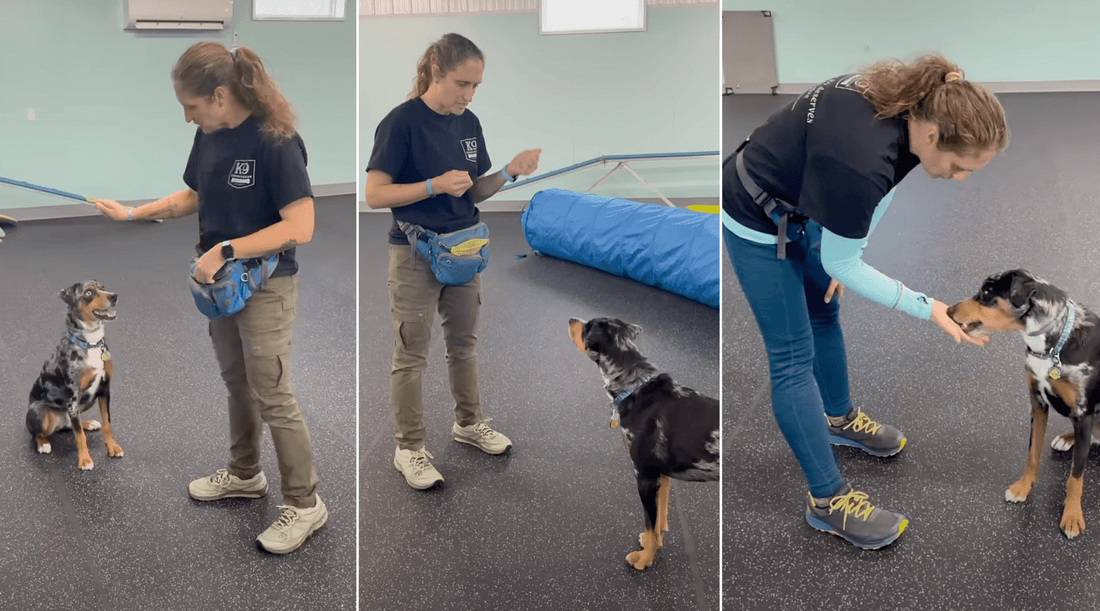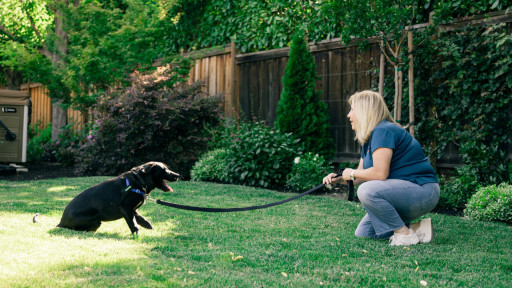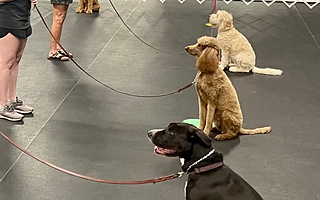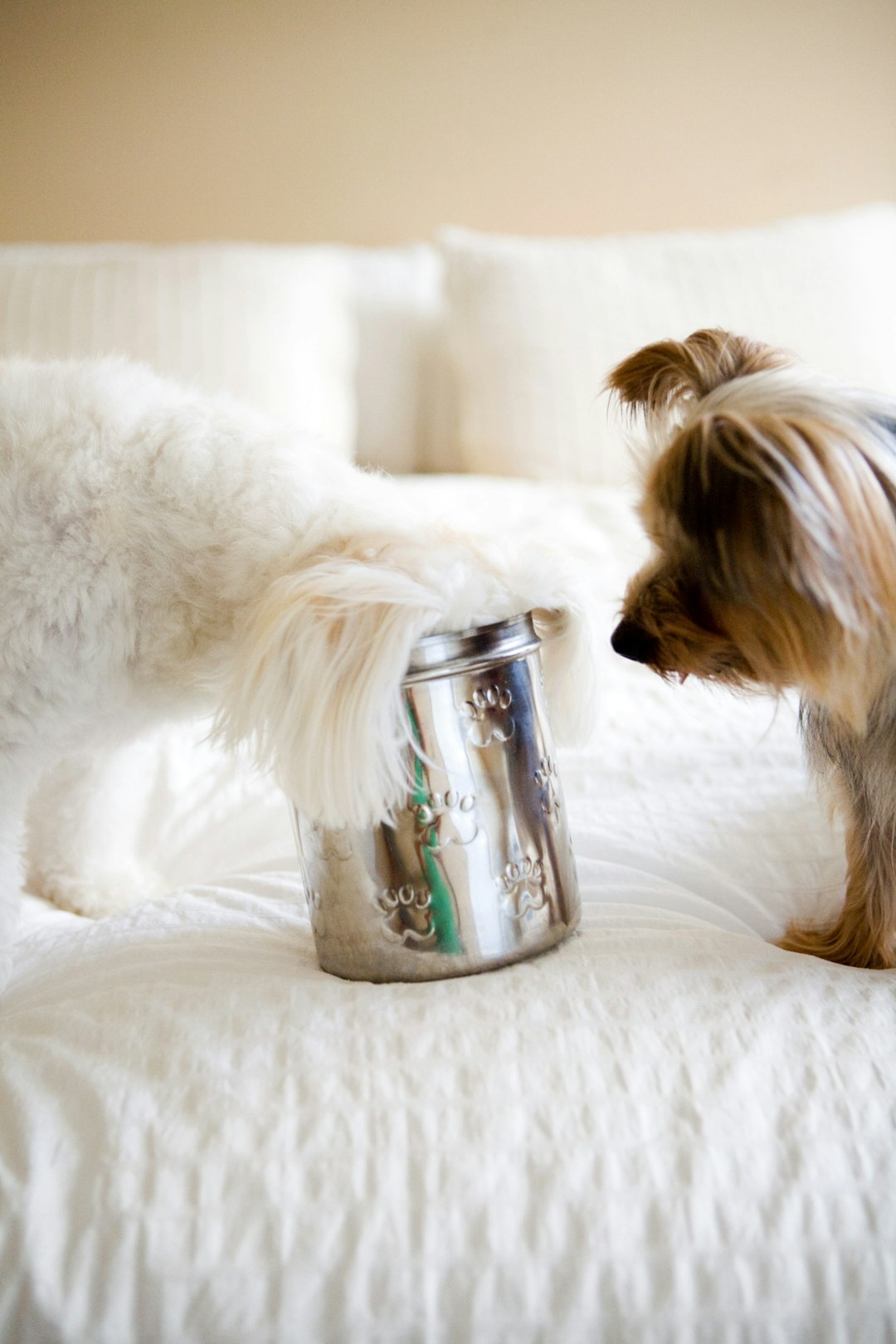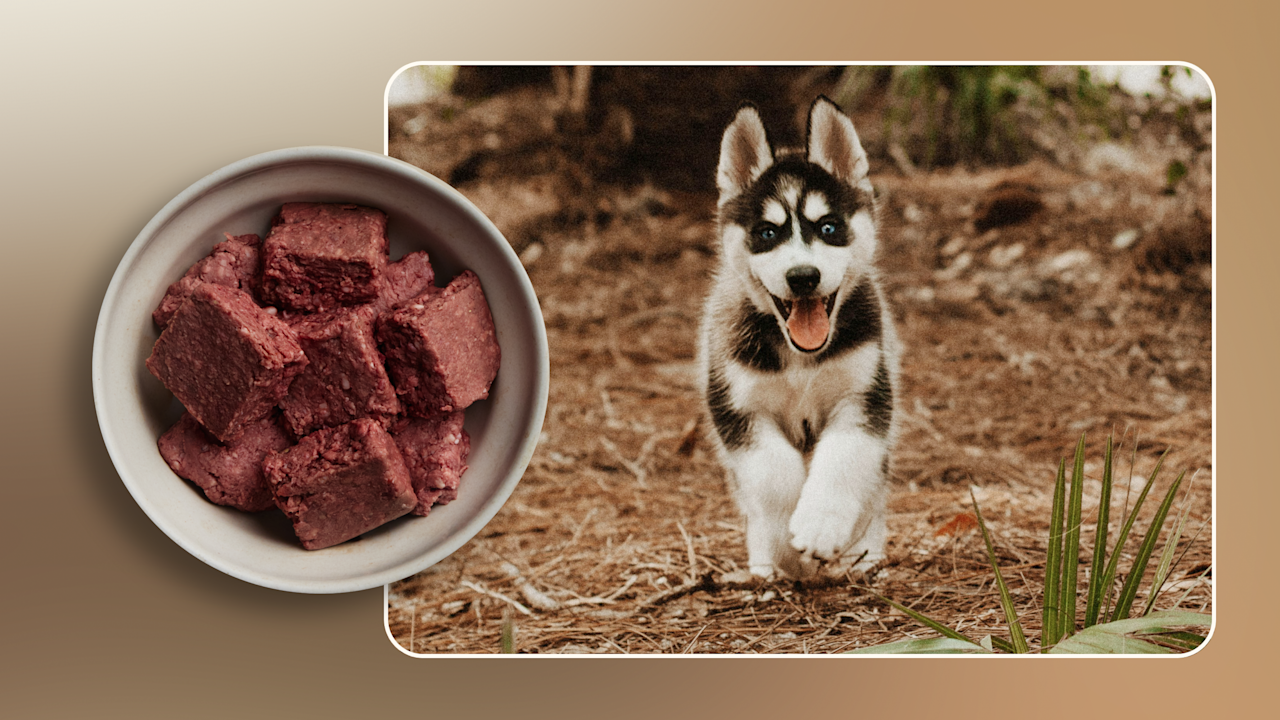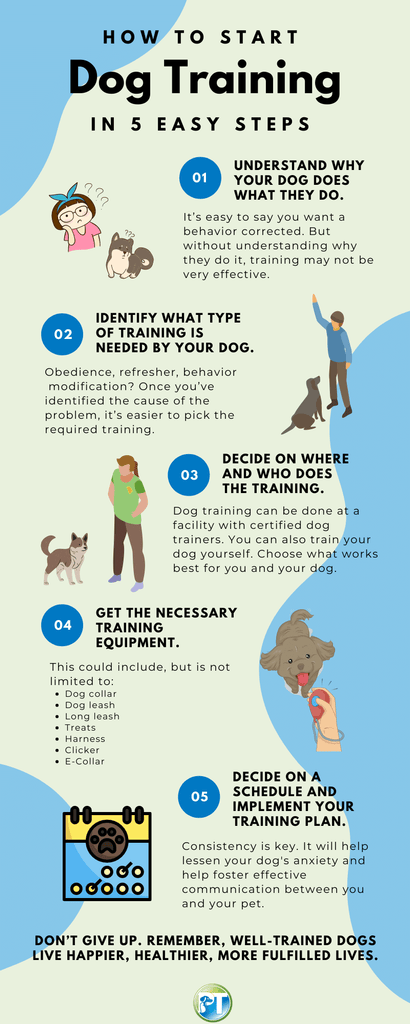Training your dog in advanced obedience can transform your relationship and make everyday life easier. Imagine your dog responding instantly to commands, staying calm in any situation, and behaving perfectly around other people and pets.
You might think this level of control is only for professional trainers, but with the right techniques, you can achieve it too. You’ll discover simple yet powerful methods to take your dog’s training to the next level. Ready to unlock your dog’s full potential?
Let’s dive in.
Choosing The Right Training Tools
Choosing the right training tools is a crucial step in ensuring your dog’s advanced obedience training is effective and enjoyable. Selecting the proper equipment can make a significant difference in how quickly your dog learns new commands and how well they behave in various situations. Let’s explore some essential tools that can help you and your furry friend succeed in advanced obedience training.
Collars And Leashes For Control
Collars and leashes are fundamental tools in dog training. They offer you control and help manage your dog’s movements during training sessions. A sturdy collar that fits snugly around your dog’s neck can prevent them from slipping out when excited. Have you ever tried a retractable leash? It can give your dog a bit more freedom to explore while maintaining control. Ensure that the leash length suits your environment, whether it’s a park or a small backyard.
Using Clickers And Treats
Clickers are small devices that make a distinct sound, marking the exact moment your dog performs a desired action. Pairing clicker sounds with treats can reinforce positive behavior effectively. Imagine your dog responding instantly to commands, thanks to the click-treat combination. But be sure to use treats your dog loves; it keeps them motivated and eager to learn. Are you ready to see your dog’s eyes light up when they hear that click?
Harnesses And Training Aids
Harnesses distribute pressure evenly across your dog’s body, preventing strain on their neck. They’re particularly useful for dogs that pull on the leash. Training aids like long leads can offer you the chance to teach your dog recall commands from a distance. Have you considered using a target stick? It can guide your dog through complex tricks, encouraging them to focus on specific tasks. How can these tools transform your training sessions?
Building On Basic Commands
Building on basic commands is key to advanced obedience training. It creates a solid foundation for new skills. This stage deepens your dog’s understanding and sharpens their responses. Focus on consistency and clear communication. Practice regularly to strengthen habits and boost confidence.
Reinforcing Sit And Stay
Strengthen the sit and stay commands by increasing distractions. Practice in different places like parks or busy streets. Use a calm voice and steady hand signals. Reward your dog immediately for holding the position. Gradually increase the time your dog stays seated. This builds patience and self-control.
Improving Recall Reliability
Recall is critical for safety and control. Start in a quiet area with minimal distractions. Use a cheerful tone to call your dog’s name. Reward with treats or praise when they come quickly. Practice short distances first, then increase range. Repeat often to build a strong habit.
Advancing Heel Work
Heel work means walking closely by your side. Teach your dog to match your pace smoothly. Use treats to guide them to the correct position. Keep sessions short and positive. Change directions often to keep your dog focused. This improves control during walks and busy situations.
Introducing Complex Commands
Introducing complex commands to your dog takes training to a new level. These commands require focus, patience, and clear communication. Your dog learns to respond to signals beyond simple words. This deepens your connection and improves obedience in varied situations.
Advanced obedience means combining skills your dog already knows. It challenges their mind and sharpens their listening. Teaching complex commands opens doors to fun, useful tricks and better behavior control.
Teaching Hand Signals
Hand signals are a silent way to communicate with your dog. They help when voice commands are hard to hear. Start by pairing a simple hand motion with a command your dog knows well. For example, raise your hand for “sit.”
Practice each signal consistently. Repeat the motion every time you give the command. Use treats or praise to reward your dog’s correct response. Over time, your dog will react to the hand signals alone.
Combining Multiple Commands
Combining commands means asking your dog to do more than one action. For instance, “sit” then “stay.” Begin by practicing each command separately. Once your dog masters both, link them together slowly.
Use clear pauses between commands at first. Reward your dog for completing the sequence correctly. Gradually, shorten the pause until your dog understands the full command. This skill builds focus and discipline.
Using Duration And Distance
Duration means how long your dog holds a command. Distance means how far you move from your dog while they obey. Start by asking your dog to “stay” for a few seconds. Reward them before they move.
Increase the time your dog stays gradually. Next, take one step back and ask your dog to hold position. Return quickly and reward. Increase distance step by step. This trains patience and control.

Credit: www.instagram.com
Enhancing Focus And Impulse Control
Enhancing your dog’s focus and impulse control is key for advanced obedience. It helps your dog listen better and behave calmly. Training these skills takes patience and the right techniques. Consistent practice makes your dog more attentive and less distracted.
Focus and impulse control reduce unwanted behaviors and improve safety. Dogs learn to wait for your commands and ignore distractions. This leads to a stronger bond and smoother communication.
Distraction Training Techniques
Start training in a quiet place with few distractions. Gradually add more distractions like noises or other dogs. Use treats and praise to reward your dog for staying focused. Practice commands like “sit” or “stay” while distractions increase. Keep sessions short to maintain your dog’s attention.
Impulse Control Exercises
- Teach “leave it” to stop your dog from grabbing things.
- Use “wait” before giving food or toys.
- Practice “stay” with longer durations and distance.
- Play impulse control games like “go to place.”
These exercises build self-control and patience in your dog.
Mental Stimulation Activities
Provide puzzles and toys that challenge your dog’s brain. Hide treats for your dog to find using smell. Teach new commands or tricks to keep your dog’s mind active. Mental work tires your dog and improves focus during training. Rotate toys and activities to keep interest high.
Correcting Behavioral Challenges
Correcting behavioral challenges is a crucial part of advancing your dog’s obedience training. Addressing unwanted behaviors early helps maintain a healthy bond and ensures your dog remains responsive and happy. You’ll find that consistent, calm correction often leads to quicker, more lasting results.
Managing Barking And Jumping
Barking and jumping can be signs of excitement, anxiety, or attention-seeking. To manage barking, try teaching a “quiet” command paired with positive reinforcement. Reward your dog when they stop barking on cue to make the behavior stick.
Jumping often happens when dogs greet people too enthusiastically. Redirect this energy by asking your dog to sit or offer a toy instead. Consistently rewarding calm greetings encourages better behavior over time.
Handling Aggression And Fear
Aggression and fear require gentle, patient handling to avoid making the problem worse. Identify triggers and create controlled situations where your dog can gradually face them without stress. Using treats and praise during these moments helps your dog associate the triggers with positive experiences.
Never punish aggressive or fearful behavior—it usually increases anxiety. Instead, focus on building your dog’s confidence through basic commands and safe socialization. Have you noticed specific patterns in your dog’s reactions? Tracking these can guide your approach effectively.
Preventing Resource Guarding
Resource guarding happens when a dog protects food, toys, or space aggressively. You can prevent this by teaching your dog to share and release items calmly. Practice trading games where you exchange a less valuable item for a treat or toy your dog likes more.
Handling resource guarding calmly avoids escalating the problem. Always approach your dog carefully when they have something valuable, and watch for warning signs like growling or stiffening. How does your dog behave around their favorite things? Observing this closely helps you intervene early.

Credit: m.facebook.com
Advanced Training Sessions
Advanced training sessions take your dog’s skills beyond basic commands. These sessions build focus, discipline, and responsiveness. They challenge your dog to think and act in new ways. Consistency and patience remain key throughout.
Structured Training Plans
Create clear daily or weekly goals for your dog. Break down complex behaviors into small steps. Use short, frequent sessions to keep your dog engaged. Track progress and adjust the plan based on results. This approach builds confidence and deepens learning.
Incorporating Agility And Tricks
Add agility exercises like tunnels, jumps, and weave poles. These activities improve your dog’s coordination and focus. Introduce fun tricks such as rolling over or playing dead. Tricks boost mental stimulation and strengthen your bond. Always reward effort and celebrate small wins.
Using Real-life Scenarios
Practice commands in different environments and situations. Simulate distractions like other dogs, noises, or crowds. Train your dog to respond calmly during walks or visits. This helps your dog apply obedience skills outside training. Real-life practice makes your dog reliable and safe.
Tracking Progress And Adjusting Plans
Tracking progress and adjusting your dog’s advanced obedience training plan is essential to keep both you and your dog motivated and moving forward. Without clear markers of success, it’s easy to lose sight of how far you’ve come or where you need to tweak your approach. Regularly checking in on your training journey helps you stay focused and ensures your dog is learning in a way that suits them best.
Setting Achievable Goals
Start by breaking down your big training objectives into smaller, manageable steps. Instead of aiming for your dog to master a complex command all at once, set goals like responding reliably in a quiet room first. This creates clear milestones and builds confidence for both you and your dog.
Ask yourself: Are these goals realistic for your dog’s current skill level? Adjust them if they feel too easy or too hard to maintain steady progress.
Recording Training Sessions
Keep a simple log of each training session. Note the commands practiced, your dog’s responses, and any challenges faced.
- Use a notebook or a digital app to jot down observations.
- Include the duration and environment of the session to spot patterns.
- Track improvements and setbacks to understand what works.
Recording details helps you spot progress over time and prevents repeating ineffective methods. Have you noticed your dog learns better in short bursts or longer sessions? Your notes will reveal this.
Adapting Techniques For Success
No single training style fits every dog. If your dog seems bored or frustrated, it’s time to tweak your approach. Try changing the reward type, the training environment, or the timing of your commands.
Sometimes, slowing down and revisiting basics can lead to breakthroughs in advanced obedience. Are you flexible enough to adjust your plan based on your dog’s reactions?
Remember, your ability to adapt shows your commitment to your dog’s learning experience. Keep experimenting until you find what clicks.

Credit: www.youtube.com
Frequently Asked Questions
What Is Advanced Obedience Training For Dogs?
Advanced obedience training teaches dogs complex commands beyond basic skills. It enhances focus, discipline, and responsiveness. This training strengthens the bond between owner and dog while improving behavior in various situations.
How Long Does Advanced Dog Training Take?
The duration varies by dog and consistency. Typically, it takes several weeks to months. Regular practice and positive reinforcement speed up progress. Patience and persistence are key for successful training outcomes.
What Are Common Advanced Obedience Commands?
Common commands include “stay,” “heel,” “place,” “wait,” and “come when called. ” These commands improve control and safety. They require higher focus and better communication between owner and dog.
Can All Dogs Learn Advanced Obedience?
Most dogs can learn advanced obedience with proper methods. Age, breed, and temperament influence learning speed. Early socialization and foundation training help dogs succeed in advanced lessons.
Conclusion
Training your dog with advanced obedience takes time and patience. Keep sessions short and fun to hold their attention. Practice commands daily to build strong habits. Reward good behavior with treats or praise. Stay calm and consistent to avoid confusion.
Every dog learns at its own pace. Celebrate small progress and keep going. A well-trained dog brings joy and safety. Enjoy the journey of growing closer with your dog.

